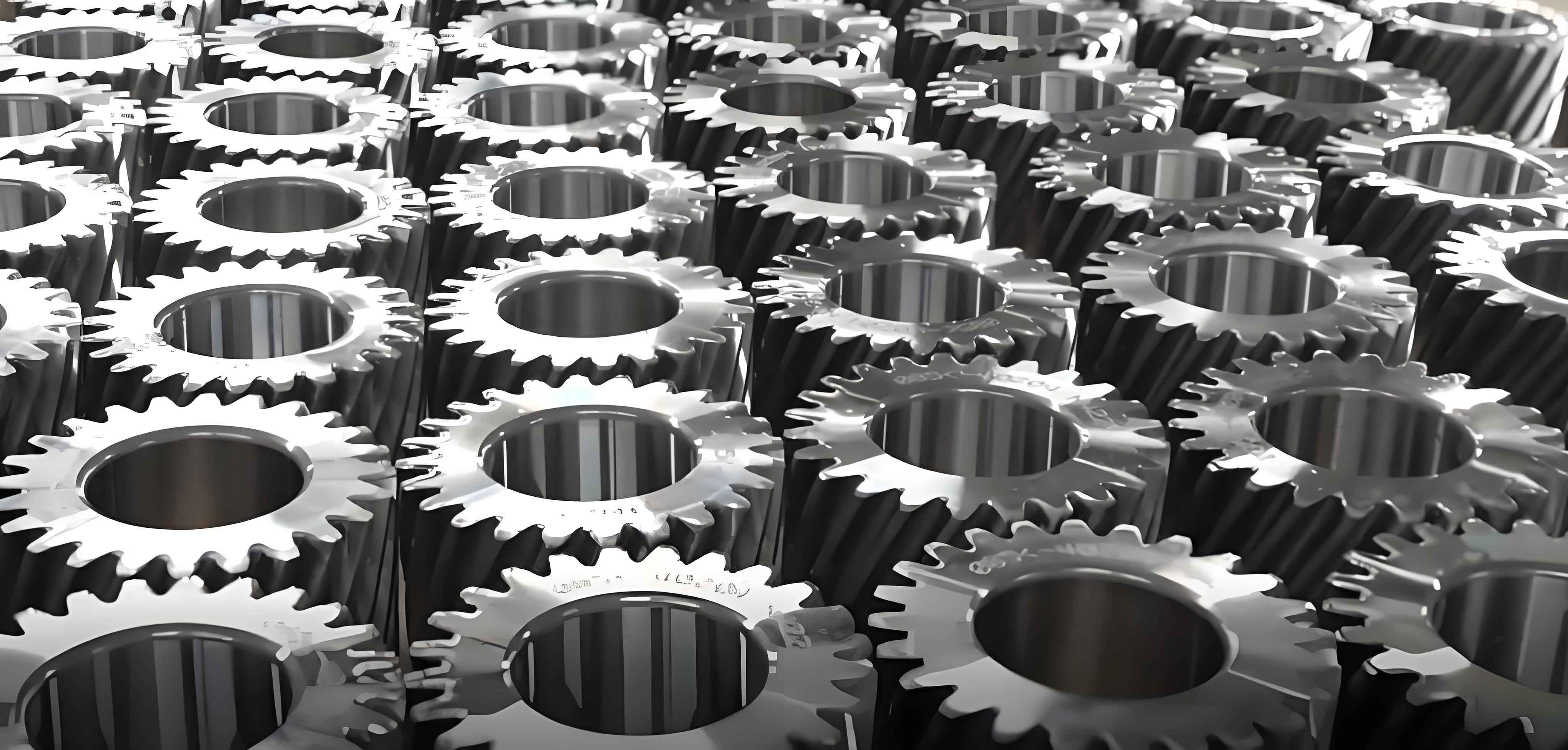The development of compact, high-efficiency transmission systems is critical for enhancing electric vehicle performance and energy economy. This research presents a novel two-stage planetary gear transmission specifically engineered for electric vehicles, addressing the limitations of single-speed systems in torque delivery and efficiency optimization across diverse driving conditions.
System Architecture and Operating Principles
The transmission employs two interconnected planetary gear sets with a shared compound sun gear and ring gear. The kinematic relationships governing the system are defined by:
$$ \omega_{C,in} = \frac{\omega_R + R_1\omega_S}{1 + R_1} $$
$$ \omega_{C,out} = \frac{\omega_R + R_2\omega_S}{1 + R_2} $$
where $\omega$ denotes angular velocities (C=carrier, R=ring, S=sun), and $R_1$, $R_2$ represent radius ratios. The transmission achieves distinct operating modes through selective braking:
| Operating Mode | Braking Element | Power Flow Path | Gear Ratio |
|---|---|---|---|
| Low Gear (High Torque) | Ring Gear | Input Carrier → Sun Gear → Output Carrier | $$ A_1 = \frac{(1 + R_2)}{(1 + R_1)} $$ |
| High Gear (High Speed) | Sun Gear | Input Carrier → Ring Gear → Output Carrier | $$ A_2 = \frac{(1 + R_1R_2)}{(R_1 + R_2)} $$ |
Based on the BAIC BJEV C40B parameters, the transmission ratios were optimized for 30° gradeability (12:1) and high-speed efficiency (4.6:1), achieved through $R_1=1.79$ and $R_2=4.05$ with final drive reduction.

Structural Design and Static Analysis
Critical transmission components were dimensioned through mechanical analysis. The sun gear bending stress verification followed:
$$ \sigma_F = \frac{2KT_1Y_{Fa}Y_{Sa}}{bd_1m_n} \leq [\sigma_F] $$
Material properties and design parameters are summarized below:
| Component | Material | Hardness | Fatigue Strength (MPa) | Dimensions (mm) |
|---|---|---|---|---|
| Sun Gears | 20CrMnTi | 58-63 HRC | $\sigma_{Hlim}$=1400, $\sigma_{Flim}$=580 | Ø66.5/Ø150 |
| Planet Gears | 20CrMnTi | 58-63 HRC | $\sigma_{Hlim}$=1400, $\sigma_{Flim}$=580 | Ø59.5/Ø101.5 |
| Ring Gear | 42CrMo | 262-293 HB | $\sigma_{Hlim}$=750, $\sigma_{Flim}$=550 | Ø269.5 |
Static analysis under maximum torque (250 N·m) revealed peak stresses of 524 MPa in low gear (sun gear shaft) and 53.2 MPa in high gear (planet gear mesh), verifying the electric vehicle gear design safety margins against material limits.
Dynamic Behavior During Shifting
The shifting dynamics were modeled using Lagrange’s equations with generalized coordinates $q = [\theta_S, \theta_R]^T$:
$$ \frac{d}{dt} \left( \frac{\partial T}{\partial \dot{q}_k} \right) – \frac{\partial T}{\partial q_k} + \frac{\partial V}{\partial q_k} = Q_k $$
where $T$ is kinetic energy, $V$ potential energy, and $Q_k$ generalized forces. The state-space representation of shifting dynamics is:
$$ \begin{bmatrix} \dot{\omega}_S \\ \dot{\omega}_R \end{bmatrix} = \begin{bmatrix} a_{11} & a_{12} \\ a_{21} & a_{22} \end{bmatrix} \begin{bmatrix} \omega_S \\ \omega_R \end{bmatrix} + \begin{bmatrix} b_{11} & b_{12} \\ b_{21} & b_{22} \end{bmatrix} \begin{bmatrix} T_{BS} \\ T_{BR} \end{bmatrix} + \begin{bmatrix} d_1 \\ d_2 \end{bmatrix} T_0 $$
SimDriveline simulations demonstrated seamless gear transitions within 300 ms. Upshifting at 6,000 RPM reduced motor speed to 2,000 RPM while increasing torque output from 135 N·m to 230 N·m, maintaining power continuity without torque interruption.
Energy Efficiency Validation
ADVISOR simulations under the NEDC cycle quantified energy savings:
| Transmission Type | Current Draw (Avg) | Energy Consumption | 1200s SOC | Improvement |
|---|---|---|---|---|
| Single-Speed | 142 A | 18.7 kWh/100km | 0.25 | Baseline |
| Two-Stage Planetary | 128 A | 17.4 kWh/100km | 0.30 | 7% SOC improvement |
The electric vehicle gear system demonstrated 7% higher SOC retention through optimized motor operating points, particularly during 10-20 km/h transitions where current reductions reached 12% compared to single-speed transmissions.
Conclusion
The planetary two-stage transmission significantly enhances electric vehicle performance metrics: torque density increased by 70% versus conventional transmissions, shift transitions completed within 300 ms without torque interruption, and energy economy improved by 7% under standard driving cycles. The compact electric vehicle gear architecture (325×562×313 mm, 27 kg) enables improved packaging efficiency for battery systems. Future research will focus on production-ready braking control systems and experimental validation of thermal management strategies under sustained high-torque operation.
